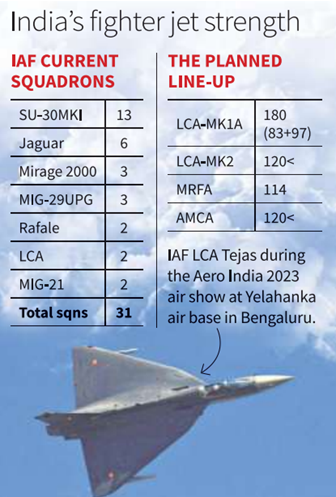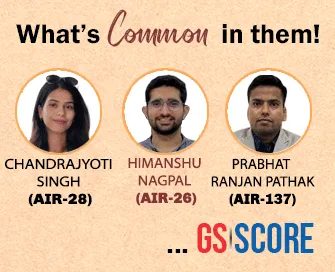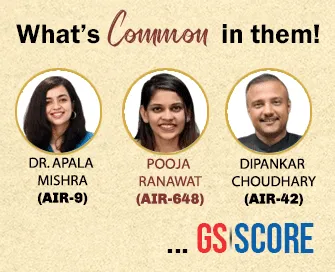

5th August 2025 (10 Topics)
Mains Issues
Context:
In June 2024, the Myanmar military junta ended the state of emergency and announced general elections by December, even as a civil war continues to escalate.
Assessing India's Strategic and Ethical Imperatives in Myanmar's Political Crisis
Background and Present Status of Myanmar Crisis
- 2021 Coup and its Aftermath: The Myanmar military (Tatmadaw) overthrew the civilian government led by the National League for Democracy (NLD) in February 2021. Since then, the country has experienced a sharp escalation in violence, with over 5,000 civilians reportedly killed and around 2.5 million displaced.
- Current Developments: In June 2024, the junta ended the emergency and called for elections despite the ongoing multi-faction civil war involving the junta, ethnic militias, and the pro-democracy resistance, including the National Unity Government (NUG).
India’s Existing Policy Approach Towards Myanmar
- India has continued formal relations with the military regime, primarily driven by strategic and security considerations, especially in the Northeast and Indo-Pacific.
- The Indian government prioritizes counterinsurgency cooperation, economic linkages (e.g., Kaladan Project), and checking Chinese influence over normative concerns like democracy or human rights.
Rethinking India's Myanmar Policy: The Need for Value-Based Realignment
- Promoting Democracy and Federalism
- India as a Model of Federal Democracy: India’s democratic and federal credentials offer a soft power advantage. The NUG and ethnic groups seek a federal constitution to replace the military-drafted 2008 constitution.
- Strategic Distinction from China: Unlike China, which maintains transactional ties with the junta, India can support institutional reforms, federalism, and democratic capacity-building.
- Halting Military and Strategic Supplies to the Junta
- Recent Arms Transfers: Reports (e.g., by Justice for Myanmar) indicate India supplied military equipment and naval diesel post-2021, undermining its moral position.
- Policy Shift Needed: India must immediately suspend any form of direct or indirect military support to the junta, as this contradicts humanitarian obligations.
- Humanitarian Corridors and Cross-Border Aid
- Crisis Along the Indo-Myanmar Border: Sagaing, Chin, and Rakhine are severely impacted regions. Refugees have crossed into Mizoram and Manipur.
- Revoking Border Fencing and FMR Suspension: The Free Movement Regime (FMR), suspended in February 2024, should be reinstated to allow tribal kin to cross borders freely for safety and humanitarian aid.
- Leveraging Local Networks and NGOs: India must partner with NGOs and local actors for non-junta-distributed aid, similar to Thailand’s cross-border model.
- Protection of Asylum Seekers and Refugees
- Non-Refoulement Principle: India must halt deportations of asylum seekers from Myanmar, especially in BJP-ruled states like Manipur and Assam.
- Legal and Moral Obligation: Though not a party to the 1951 Refugee Convention, India is bound by the customary international law principle of non-refoulement and Article 21 of its Constitution ensuring the right to life.
Way Forward
- Strategic Realignment with Values: India should frame its Myanmar policy on a synergy of democratic values and long-term strategic interests.
- Soft Power Diplomacy: By engaging civil society, aiding institutional development, and promoting human security, India can enhance its regional stature and differentiate itself from China.
- Humanitarian Leadership: Opening aid corridors and protecting asylum seekers can project India as a responsible regional power.


Mains Issues
Context:
The Indian Air Force is set to retire its MiG-21 fighter jets in September 2025 after over six decades of service.
Impact of MiG-21 Retirement on IAF Combat Strength and the Roadmap for Fighter Fleet Modernisation
Legacy and Phasing Out of the MiG-21 Fighter Aircraft
- Introduction and Historical Significance
- Inducted in 1963 post the 1962 Sino-Indian War, the MiG-21 was the first supersonic and non-western fighter aircraft of the IAF.
- A total of 872 aircraft were inducted, with most license-produced by Hindustan Aeronautics Limited (HAL).
- Operational Contribution
- Played a pivotal role in the 1965 and 1971 Indo-Pak wars, Kargil conflict (1999), and Balakot airstrike follow-up in 2019.
- In the 2019 aerial engagement, Group Captain AbhinandanVarthaman shot down a Pakistani F-16 with a MiG-21 before being downed.
- Safety Record and Training Use
- Over 450 accidents were recorded, earning the jet the moniker "flying coffin."
- Used for Stage-III pilot training in the absence of an Advanced Jet Trainer (AJT) before the Hawk AJTs were inducted in 2008.
- Current Status
- Only two squadrons— 23 Panthers and No. 3 Cobras—remain in service.
- These squadrons will transition to the LCA Mk1A, marking the end of the MiG-21 era.
Impact on Fighter Squadron Strength and Force Structure

- Reduced Operational Squadrons
- With the MiG-21 retirement, IAF’s strength will decline from 31 to 29 squadrons, far below the sanctioned strength of 42 squadrons.
- A typical fighter squadron includes 16–18 aircraft.
- Aging Fleet and Future Phase-Outs
- The Mirage-2000, Jaguar, and MiG-29 fleets are expected to retire by the end of the decade.
- This will leave the Su-30MKI, upcoming LCA variants, and future Medium Role Fighter Aircraft (MRFA) as mainstays.
LCA Mk1A Induction and Production Challenges
- Procurement Timeline and Delays
- ?48,000 crore contract signed for 83 LCA Mk1A jets, with deliveries originally scheduled to begin in March 2024.
- Delays caused by development bottlenecks and non-delivery of GE Aerospace F404 engines due to global supply chain constraints.
- Current Engine Status
- First F404 engine arrived in April 2025, second in August 2025.
- HAL aims to scale up production to 24 aircraft per year.
- Future Induction Pipeline
- Additional procurement of 97 LCA Mk1A jets worth ?67,000 crore under negotiation.
- LCA Mk2, which is larger and more capable, is expected to replace Mirage-2000, Jaguar, and MiG-29. First flight is expected in 2026.
Fifth Generation Capabilities and AMCA Programme
- Advanced Medium Combat Aircraft (AMCA)
- Planned in two phases:
- AMCA Mk1 to be powered by GE F414 engines.
- AMCA Mk2 with an indigenous 110KN engine under co-development.
- Targeted induction:early 2030s, with prototype development expected to take 10 years.
- Planned in two phases:
- Interim Acquisition of Foreign FGFA
- Discussions ongoing for limited imports of 5th Generation Fighters—options include SU-57 (Russia) and F-35 (USA).
- These are likely interim acquisitions until AMCA is operationalised.
Su-30MKI and Upgrade Programme
- Fleet Strength and Replacement
- India has procured 272 Su-30MKIs, with ~260 currently in service.
- An order for 12 additional Sukhois worth ?13,500 crore was placed to replace aircraft lost in crashes.
- Upgradation Plans
- HAL has received approval for a major upgrade of 84 Su-30MKIs in the first batch, aimed at enhancing avionics and combat capability.
- Older batches of Su-30MKIs are expected to phase out by early 2040s.
Medium Role Fighter Aircraft (MRFA) and Future Acquisitions
- MRFA Programme Status
- Request for Information (RFI) was floated in April 2019, but no significant progress has been made.
- The deal for 114 fighter jets faces uncertainty due to budgetary constraints, parallel indigenous programmes, and long procurement timelines.
Way Forward
- Expedite delivery of LCA Mk1A aircraft and conclude contracts for additional orders.
- Accelerate AMCA prototype development through private sector participation and technological collaboration.
- Close the MRFA deal to address medium-term force strength until indigenous platforms mature.
- Ensure comprehensive engine ecosystem under Make-in-India through joint ventures with firms like GE Aerospace.


Prelims Articles
Context:
The NCS Portal has mobilised over 6.43 crore vacancies and signed more than 25 MoUs with private and public organisations to expand employment and skill development services.
National Career Service (NCS) Portal – Overview:
- Launched by the Ministry of Labour& Employment, the NCS Portal is a digital employment platform offering a wide range of career-related services.
Key Features of the NCS Portal:
- Job listings from Government, Private Sector, and PSUs
- AI-based resume builder, multilingual support, job/resume sharing, and feedback mechanism
- Career counselling, vocational guidance, and skill development information
- Support for online and offline job fairs, employability enhancement, and training programs
- Services are inclusive, covering SC/ST candidates and other vulnerable sections
Recent Developments (As on 14 July 2025):
- 43 crore vacancies mobilised
- 48 lakh+ employers registered
- 1182 career counsellors onboarded
- 41 lakh+ career counselling sessions conducted
- 25+ MoUs signed with organisations like TCS iON, Quikr, FoundIt (Monster), APNA, Swiggy, Rapido, Amazon, etc.


Prelims Articles
Context:
The Ministry of Environment, Forest and Climate Change commemorated World Environment Day 2025 on 5th June with the theme ‘One Nation, One Mission: End Plastic Pollution’ and launched multiple national initiatives, including the National Plastic Pollution Reduction Campaign.
Key Theme and Participation:
- The central slogan was “One Nation, One Mission: End Plastic Pollution.”
- Over 69,000 events were conducted across India with participation from around 21 lakh individuals.
- Celebrations followed a Whole of Government and Whole of Society approach involving industry, students, civil society, and government departments.
High-Impact Initiatives:
- PM Narendra Modi launched ‘Ek Ped MaaKe Naam’ and planted a Banyan sapling under the Aravalli Green Wall Project, targeting the reforestation of 700 km of the Aravalli range.
- Flagged off 200 electric buses under Delhi's sustainable transport initiative, promoting green urban mobility.
Campaign Against Plastic Pollution:
- National Plastic Pollution Reduction Campaign (NPPRC) launched from 5th June to 31st October 2025, including:
- Focus on tiger reserves, urban and rural areas, and government offices.
- Activities: Hackathon, slogan/poem/skit competitions, public outreach via Swachhata Hi Sewa, and Special Campaign 5.0.
Regulatory and Technological Interventions:
- Plastic Waste Management (Amendment) Rules, 2024:
- Mandates online annual reports submission by ULBs and Panchayats by 30th June.
- National Plastic Waste Reporting Portal launched on 5th June 2025.
- Plastic Waste Management (Amendment) Rules, 2021:
- Prohibition of specific Single Use Plastic (SUP) items from 1st July 2022.
- Compliance drives led to 861,740 inspections, 1,985 tonnes of SUP seized, and ?19.82 crore in fines imposed.
Promotion of Eco-Alternatives and EPR Mechanism:
- Compendium of Eco-Alternative Manufacturers/Sellers (nearly 1,000 units) launched by MoEFCC and CPCB.
- IS 18267 notified for food-serving utensils made from agri by-products.
- Centralized EPR Portal:
- Registered: 51,838 Producers, Importers, Brandowners& 2,948 Plastic Waste Processors.
- ~157 lakh tonnes of plastic packaging waste recycled.
- Revised Guidelines for Environmental Compensation (based on polluter pays principle) issued by CPCB in August 2024.


Prelims Articles
Context:
India is advancing its efforts in blue carbon ecosystem conservation through afforestation under the NamamiGangeProgramme and new schemes such as MISHTI, even as explicit national guidelines for blue carbon remain under development.
Blue Carbon Ecosystems – Definition and Significance:
- Blue carbon ecosystems include mangroves, seagrass meadows, and salt marshes, which absorb and store atmospheric CO?.
- These ecosystems act as natural carbon sinks, support biodiversity, reduce coastal erosion, and function as climate adaptation buffers.
NamamiGangeProgramme and Afforestation:
- The National Mission for Clean Ganga (NMCG) includes components indirectly contributing to blue carbon sequestration.
- Between 2016–17 and 2022–23, a total of 33,024 hectares of plantations were carried out across 5 states — Uttarakhand (12,306 ha), Uttar Pradesh (9,166 ha), Bihar (8,554 ha), Jharkhand (884 ha), and West Bengal (2,115 ha) — based on a DPR prepared by the Forest Research Institute (FRI), Dehradun.
MISHTI Initiative (2023–24):
- Announced in Union Budget 2023–24 and launched on 5th June 2023 (World Environment Day) by MoEFCC.
- MISHTI (Mangrove Initiative for Shoreline Habitats & Tangible Incomes) aims to conserve and restore mangrove ecosystems by leveraging convergence with State CAMPA, MGNREGS, and National CAMPA (for gap-funding).
- Tamil Nadu has not yet submitted a plan under MISHTI, though it received ?220.43 lakhs (2017–18 to 2022–23) for mangrove restoration under the National Coastal Mission.
Carbon Credit Trading Scheme (CCTS):
- Notified on 28th June 2023 under the Energy Conservation (Amendment) Act, 2022.
- Operates via two mechanisms: (i) Compliance mechanism, and (ii) Offset mechanism.
- Overseen by Bureau of Energy Efficiency (BEE) and National Steering Committee for the Indian Carbon Market (NSCICM).
- No technical assistance has yet been given to Tamil Nadu or other States under CCTS.
Gaps and Future Policy Scope:
- While restoration activities are ongoing, there is no dedicated implementation framework or national guidelines for Blue Carbon projects.
- The government promotes community involvement and Traditional Ecological Knowledge (TEK) in restoration, but blue carbon is not explicitly included in India's NDC targets under the Paris Agreement.


Prelims Articles
Context:
India is developing an early-warning system for detecting destructive secondary waves (S-waves) during earthquakes to protect lives and infrastructure.
About S-Waves and Early Warning:
- Earthquakes release primary waves (P-waves) and secondary waves (S-waves).
- P-waves are faster and less damaging, while S-waves are slower but more destructive.
- An early-warning system (EWS) detects P-waves and provides a short lead time (a few seconds) to warn about incoming S-waves.
- This lead time can be used to shut down infrastructure, alert citizens, and evacuate vulnerable buildings.
India’s Initiative:
- Over the next decade, India plans to deploy a national network to detect P-waves and anticipate S-waves.
- The Ministry of Earth Sciences is leading this effort.
- The system will include accelerometers, seismometers, and GPS devices at vulnerable locations.
Technological Integration:
- Systems will incorporate real-time data, resilient construction practices, and AI for risk evaluation.
- The Coalition for Disaster Resilient Infrastructure (CDRI) plays a vital role in supporting such initiatives.
Current Challenges:
- Scientific prediction of exact time, location, and magnitude of earthquakes remains unresolved.
- However, seismic monitoring in real time can help in assessing where and when an earthquake has occurred.
Global Example:
- Japan already operates a functional earthquake early-warning system using the same principle.
- India aims to emulate such systems by strengthening scientific and technical infrastructure.
|
India’s Vulnerability:
|


Prelims Articles
Context:
NITI Aayog has launched the India Electric Mobility Index (IEMI) to benchmark and track the electric mobility progress of States and Union Territories across India.
India Electric Mobility Index (IEMI)
Implementing Agency:
- The India Electric Mobility Index (IEMI) is developed and released by NITI Aayog, with support from sectoral experts and stakeholders.
Objective and Scope:
- The Index provides a comprehensive, transparent, and comparative framework for evaluating the performance of States and UTs in achieving electric mobility targets.
Key Themes & Indicators:
- Evaluates performance across three core themes:
- Transport Electrification Progress – demand-side EV adoption.
- Charging Infrastructure Readiness – development of public and private EV charging networks.
- EV Research and Innovation Status – supply-side ecosystem including R&D efforts and innovation.
- The index assesses States and UTs using 16 indicators with a total score of 100.
Policy Utility:
- Enables benchmarking, promotes healthy competition, and encourages cross-learning among States.
- Assists policymakers in identifying strengths, weaknesses, and intervention priorities.
Significance:
- Aligns with India’s goal of achieving net-zero emissions by 2070.
- Supports the broader vision of decarbonized, energy-secure, and inclusive mobility.


Editorials
Context:
Allegations of irregularities in the 2024 general elections have reignited debates over the transparency and impartiality of the Election Commission of India.
Political Allegations and Public Perception
- Foundational Role of Trust: The legitimacy of a democratic electoral system depends on universal perception of fairness, particularly by those who lose, akin to judicial verdicts or competitive sports outcomes.
- High-Level Political Accusations: The Leader of Opposition, has alleged discrepancies in the 2024 general elections, while past political figures, including Prime Minister Narendra Modi during his tenure as Gujarat Chief Minister, have questioned the impartiality of the ECI.
- State-Level Disputes – In Bihar, leaders of opposition has claimed exclusion from the draft electoral roll due to a mismatch in his Elector’s Photo Identity Card (EPIC) number with ECI records, creating fresh controversy.
Institutional Accountability and Deficiencies
- Mandate under Scrutiny: The ECI’s neutrality and efficiency are tested in roll preparation, election scheduling, enforcement of the Model Code of Conduct, vote counting, and grievance redressal.
- Opaque Handling of Complaints: The Commission has largely limited itself to asserting that Electronic Voting Machines (EVMs) are tamper-proof, while failing to provide clarity on multiple procedural queries.
- VVPAT Transparency Concerns: The Voter Verifiable Paper Audit Trail (VVPAT), unlike other EVM components, contains centrally installed software, yet its random tallying process remains arbitrary and inadequately explained.
Structural and Systemic Challenges
- Unequal Party Capacity: Political parties vary in their ability to monitor different stages of the electoral process, leading to unequal oversight capabilities.
- Non-Negotiable Integrity: Electoral integrity is not a matter of compromise or negotiation between political parties and the ECI; it must be ensured as a constitutional obligation.
- Course Correction Imperative: The ECI must enhance transparency, procedural fairness, and proactive disclosure to restore public confidence in the electoral framework.
Practice Question:
Critically analyse the challenges in ensuring transparency and impartiality of the Election Commission of India in light of recent controversies surrounding the 2024 general elections. Suggest institutional reforms to strengthen its credibility. (250 words)


Editorials
Context:
India’s trade negotiations with the United States under President Trump’s administration risk compromising India's economic sovereignty and domestic dignity.
The Nature of the Current Global Shift
- Trumpian Reform – A Spectacle of Capitalism Reset: The Trump administration’s trade policies reflect a reset of capitalism that strengthens oligarchic and speculative tendencies rather than reforming them for equity.
- India–US Equation – Misreading the Moment: Treating India–US trade talks as transactional underplays the ideological and geopolitical consequences of aligning with coercive economic models.
- Specter of Imperialism – Embedded Domination: The US’s vision of economic reform embeds capitalism in unequal global regulations, potentially undermining India’s self-reliance and strategic autonomy.
The Tools and Impact of Economic Coercion
- Tariff Weaponization – Modern-Day Imperial Tool: The United States does not reduce tariffs equitably; instead, it maintains them to extract disproportionate economic concessions.
- Technological Control – Business-Led Domination: By controlling tech regulations and setting the rules, the US ensures that developing countries remain dependent on its firms and standards.
- Climate Inaction – Fossil Economy Promotion: The US-led order promotes a fossil-fuel-based economy while shirking global climate responsibilities, burdening the Global South disproportionately.
Consequences for India and Strategic Autonomy
- Humiliation Diplomacy – A Loss of Dignity: India risks being seen as a supplicant state if it rushes into unequal trade deals, compromising its global standing and internal reforms.
- Premature Victory – Lobby-Driven Concessions: The internal pro-US lobby prematurely hails success in these negotiations without gauging the long-term strategic and economic costs.
- World System Reset – Uncertain Future: If this global reset strengthens authoritarian capitalism and oligarchy, India's alignment without clarity will diminish its leadership in the emerging world order.
Practice Question:
Critically examine how emerging trade negotiations between India and the United States reflect deeper shifts in global capitalism. In light of recent developments, analyze the implications for India’s strategic autonomy and domestic policy integrity. (250 words)


Editorials
Context:
Concerns have arisen over the inadequacy of India’s Extended Producer Responsibility (EPR) floor price for battery waste recycling, posing risks to environmental safety, circular economy goals, and foreign exchange savings.
Rising Battery Demand and Environmental Risks
- Rapid Growth in Lithium Battery Usage: India’s lithium battery demand is projected to rise from 4 GWh in 2023 to nearly 139 GWh by 2035, driven by electric vehicle adoption and renewable energy storage systems.
- Environmental Hazards of Improper Disposal: Unsafe disposal of lithium batteries can result in leakage of hazardous materials into soil and water, contributing to India’s 1.6 million metric tonnes of annual e-waste.
- Governmental Regulatory Intervention: The Battery Waste Management Rules (BWMR) 2022 were introduced to ensure sustainable collection, recycling, and recovery of critical minerals from battery waste.
Challenges in the Current EPR Pricing Mechanism
- Inadequate EPR Floor Price: The existing proposed EPR floor price is too low to cover the actual costs of advanced recycling technologies, safe transportation, skilled labour, and hazardous waste treatment.
- Risk of Informal and Fraudulent Recycling: Low pricing incentivises illegal recyclers who issue fake certificates or dump waste, replicating failures seen in India’s plastic waste management sector.
- Economic and Strategic Losses: Without adequate recycling, India could face over $1 billion in foreign exchange losses by 2030 due to continued import dependence for lithium, cobalt, and nickel.
Policy Reforms and Strategic Actions
- Adopting Globally Comparable Pricing: India should align EPR floor prices with international benchmarks, such as the UK’s ~?600/kg for EV battery recycling, while adjusting for purchasing power.
- Strengthening Enforcement Mechanisms: Robust audit systems, digital tracking of EPR certificates, and stringent penalties for fraud are essential to ensure compliance.
- Formal Integration of Informal Recyclers: Training and regulatory inclusion of informal sector workers can expand recycling capacity and eliminate unsafe disposal practices.
Practice Question:
Discuss the challenges and policy imperatives for establishing a sustainable lithium battery recycling ecosystem in India. In your answer, highlight the role of Extended Producer Responsibility (EPR) pricing in promoting environmental protection and economic security. (250 words)



